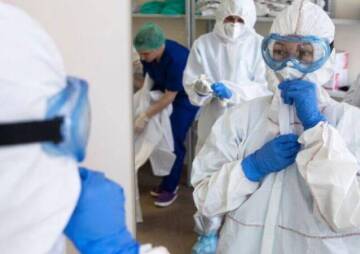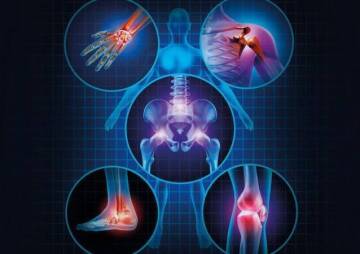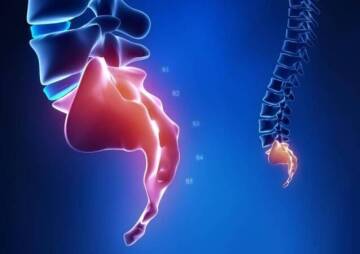-
فئة
Craniomaxillofacial Surgery
Orthopedic Surgery
Spine Surgery
Orthopedic Implants
Hip Surgery
Knee Surgery
Pectus Excavatum
Bone Graft
Disinfectants
Healthcare
Familiarity with the dangers of the nursing profession

There are many occupational hazards for nurses, from disinfectants to problems caused by patients' aggression. In this article, we have introduced the risks and methods to reduce their impact.
Each job has its risks, including the situation of a nurse. Nurses face many physical and psychological dangers during their working hours. These include infections, toxins, trauma, stress, tedious and lengthy shifts, various back injuries, radiation exposure, and even violence by patients and their companions. It is essential to study these factors and find a solution to reduce the risks of nursing. In this article, we will introduce the most common dangers that threaten the medical staff.
Infectious diseases and problems caused by disinfectants
There is a risk of infection in hospitals and other medical centers such as clinics, outpatient surgery centers, nursing homes, dialysis centers, health centers, and prison medical centers. Hospitals are high-risk wards, pediatric wards, infectious disease wards, emergency wards, and intensive care units.
For example, hepatitis B is one of the most common infectious diseases associated with nursing. Although the virus is present in the blood, it may also be present in patients' saliva, feces, and semen. The virus can be transmitted through a contaminated needle or a wound in the nurse's hand when in contact with saliva and other mucous membranes.

In many cases, nurses may expose to various infectious diseases such as measles, mumps, rubella, influenza, and the latest human scourge, coronary heart disease.
To prevent the spread of infections, necessary to observe safety principles, treat the staff regularly, and properly dispose of and collect infected needles.

The best way to reduce the risk of infectious diseases in nurses is to follow hygiene and hygiene instructions and use proper washing and disinfection methods of medical equipment and hands.
Regular hand washing is essential to reduce infections and, of course, moisturizing creams to prevent dry skin. However, many nurses are not immune to the damages caused by disinfectants. The use of non-toxic disinfectants such as nanosilver that do not harm the skin and at the same time have strong antimicrobial properties can be a great help in maintaining the health of nurses.

Exposure to toxic substances
Cytotoxic drugs are dangerous for the nurses who work with them. In mild cases, these substances irritate the skin, eyes, and allergic reactions, and in acute cases, they can cause genetic mutations and cancer.
Ethylene oxide is used in hospitals to sterilize medical instruments and heat-sensitive materials and may be available in surgical centers and patient care wards. Studies have shown that this substance also has carcinogenic, mutagenic, and teratogenic properties.
The risk of kidney disorders (methoxyflurane) and liver disorders (halothane) increases if operating room nurses are exposed to anesthetic gases for a long time. These diseases cause problems such as miscarriage and congenital disabilities in pregnant nurses.
Nurses working in kidney dialysis units expose to formaldehyde. Formaldehyde causes dermatitis and allergies, eye irritation, and asthma.

Glutaraldehyde is also a microbicide used in dialysis, endoscopy, and intensive care units for cold sterilization. It irritates the skin and mucous membranes, and if nurses expose to too much of this substance, they will develop liver toxicity in their body.
Mercury use in various medical instruments. However, suppose the glass part of these devices contains mercury. In that case, the medical personnel exposed to it will be poisoned, which is a small amount of this poisoning causes damage to the respiratory and nervous system of the lungs and, in severe cases, leads to death.
Latex is present in many medical devices, such as surgical and sanitary gloves. Some latex allergies can cause a mild allergic reaction that may cause dermatitis, while severe allergies can cause anaphylaxis.
To reduce the risks of toxic substances on nurses, it is necessary to:
- Hazardous and toxic substances should be accurately labeled.
- Store the flammable materials in closed containers.
- Use safety equipment such as respirators and safety clothing.
- If you are sensitive to latex, use latex-free gloves.
- Tutoring the correct method of rinsing the eyes in case of contamination of the eyes with toxic substances.

- There should be a special section for disposing of toxic and contaminated materials and containers in hospitals and clinics.
- Provide adequate information to health personnel on the signs and symptoms of exposure to contaminants.
Physical stress caused by work
Nurses stay on their feet for long hours each time, which means that physical stress is one of the most significant risks affecting nurses.
Lifting and transporting patients, incredibly obese patients, is also dangerous and is the most common cause of back injuries among health care workers. Many nurses and medical staff are needed to lift patients, move elderly patients to bed or equipment. Carry heavy medicine. Because of this, they are more likely to have back pain. Of course, the rate of back pain and spinal cord injury is higher in nurses and nurses.

Hospitals need to be equipped with mechanical equipment to move and lift patients To reduce physical injuries to nurses. It helps nurses to move and lift patients with the least physical pressure. These tools significantly reduce nurses' injuries.
Wearing appropriate medical shoes for walking and standing in the workplace and observing ergonomic principles to do the work in a specific position, such as placing the hands above the shoulders or performing repetitive actions, can also help reduce nurses' physical injuries.
Stress and depression
Nurses who deal with chronically ill patients and those who work in the intensive care unit, emergency room, burn room or operating room are at risk for neurological disease and stress. Early symptoms include loss of appetite, migraine headaches, emotional instability, and sleep disturbances.
Various environmental factors affect nurses' stress, patients' demands, overwork, lack of human resources and heavy work shifts, pressure from caregivers, and patients' death. Sometimes these problems lead to increased consumption of cigarettes, alcohol, and drugs and affect nurses' behavior.

Adequate training and communication with nurses and staff can help reduce their stress during daily work. These include regular meetings to share feelings and ideas, stress management training, and relaxation exercises. Having a regular schedule without work stress, having enough workforce in the hospital will also help staff avoid work stress.
Facing all kinds of aggression
Nurses in medical centers expose various forms of violence, from patients with neurological and mental problems to patients 'companions who sometimes hold nurses and doctors responsible for their patients' inadequacies. Sometimes patients become aggressive due to mental disorders, drug reactions, electrolyte imbalances, and perform movements that cause harm those around them, especially nurses.

Usually, young nurses and assistant nurses who have not received much training to control others' anger expose to this violence. Which in some cases leads to irreparable damage.
Radiation exposure
Nurses working in radiography or surgery will face several problems from exposure to various rays. Increased miscarriage, stillbirth, cancers such as myelogenous leukemia, bone, and skin cancer are some of the common issues resulting from exposure to these rays.

To create a safe environment for them
There are numerous job risks in the nursing profession, from the dangers of disinfectants to the problems caused by patients' aggression. All of this raises concerns for nurses. Recognizing these problems and finding logical solutions to them will make nurses' work environment safer.






